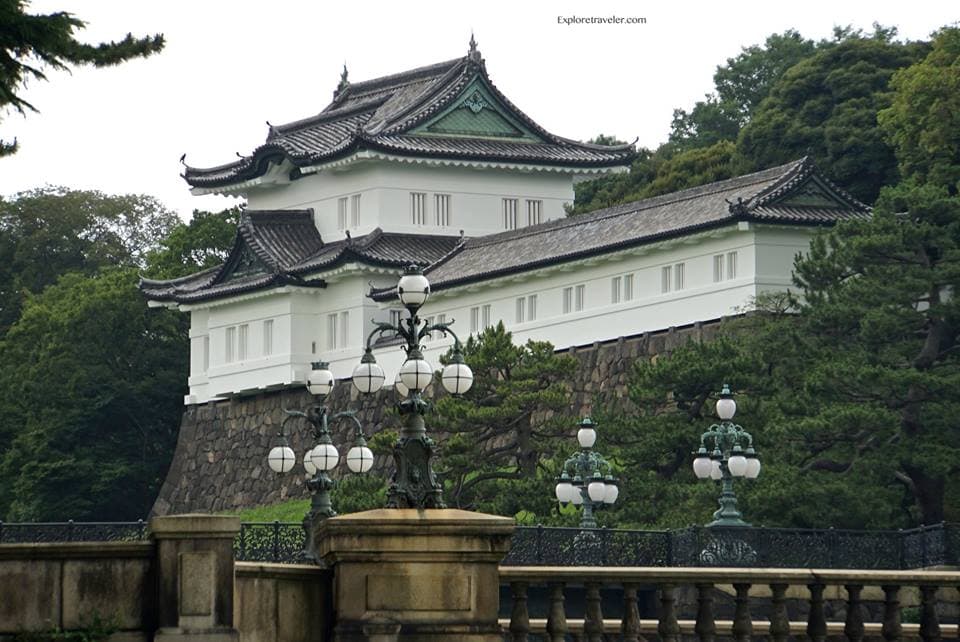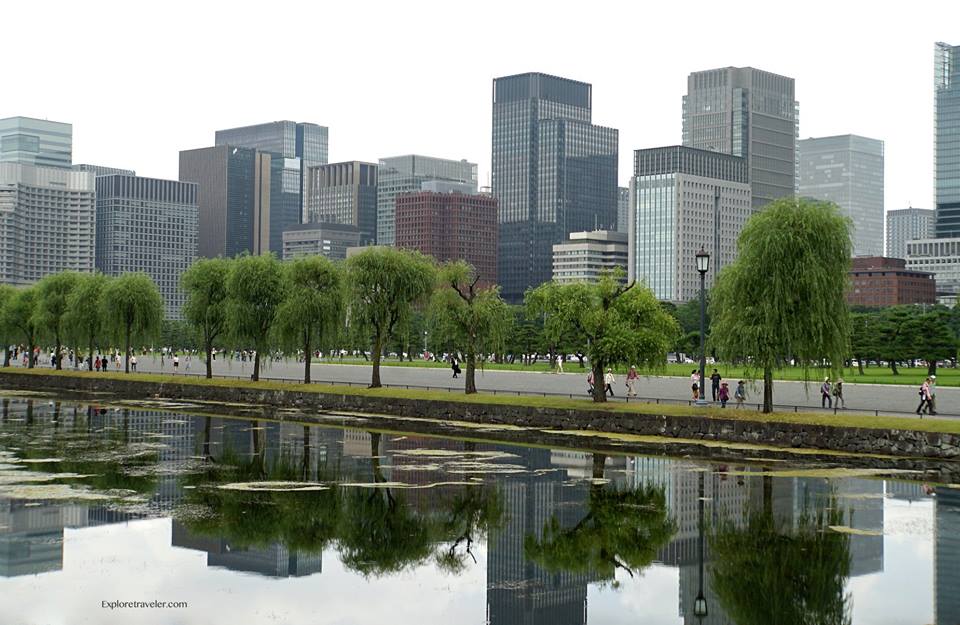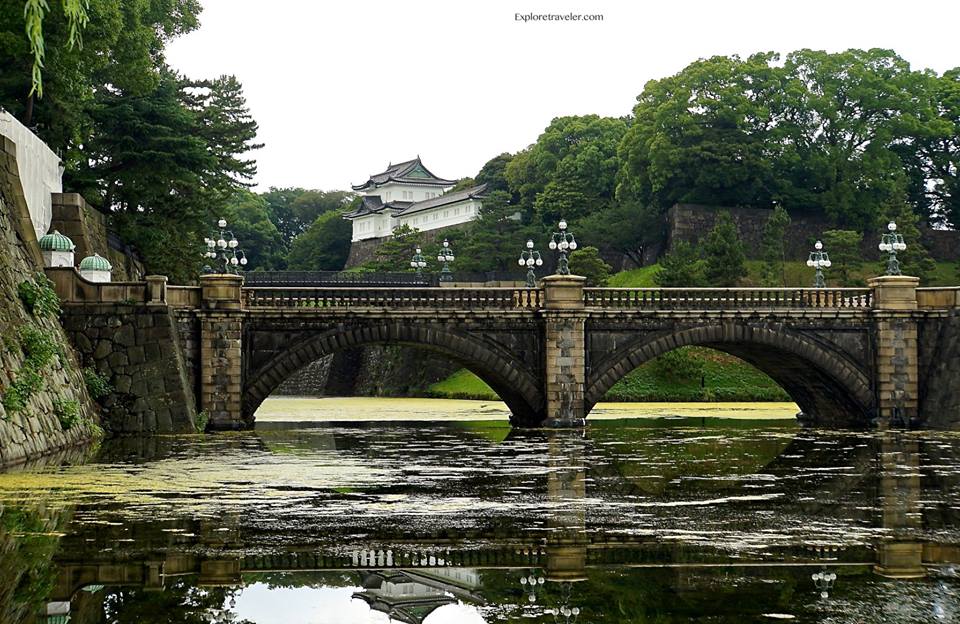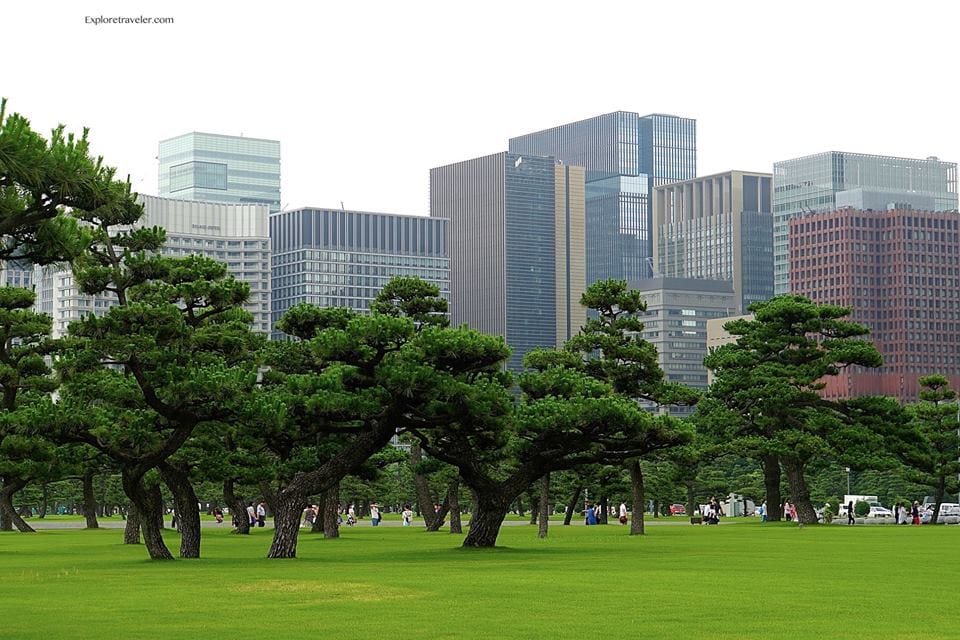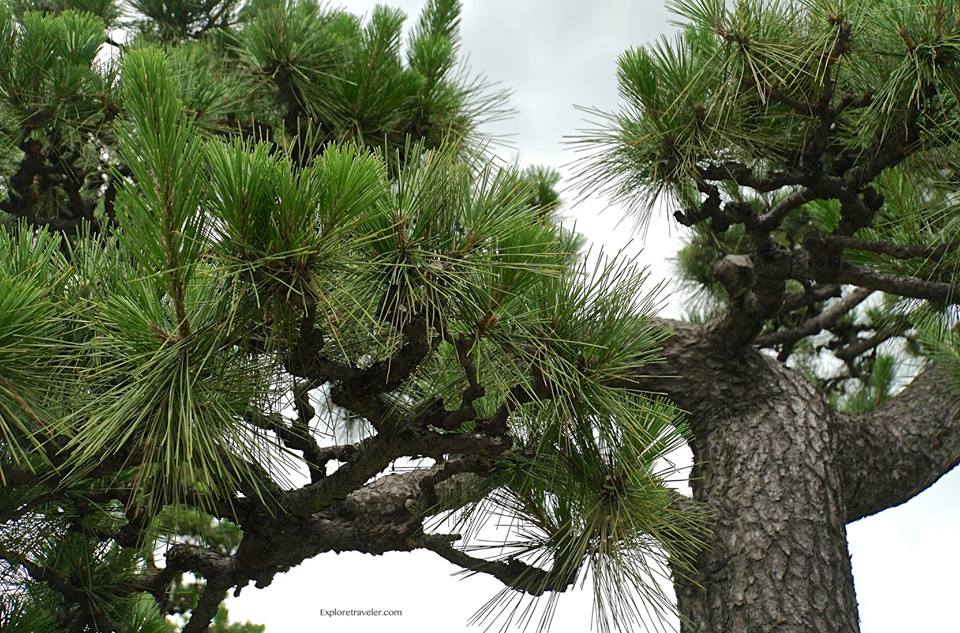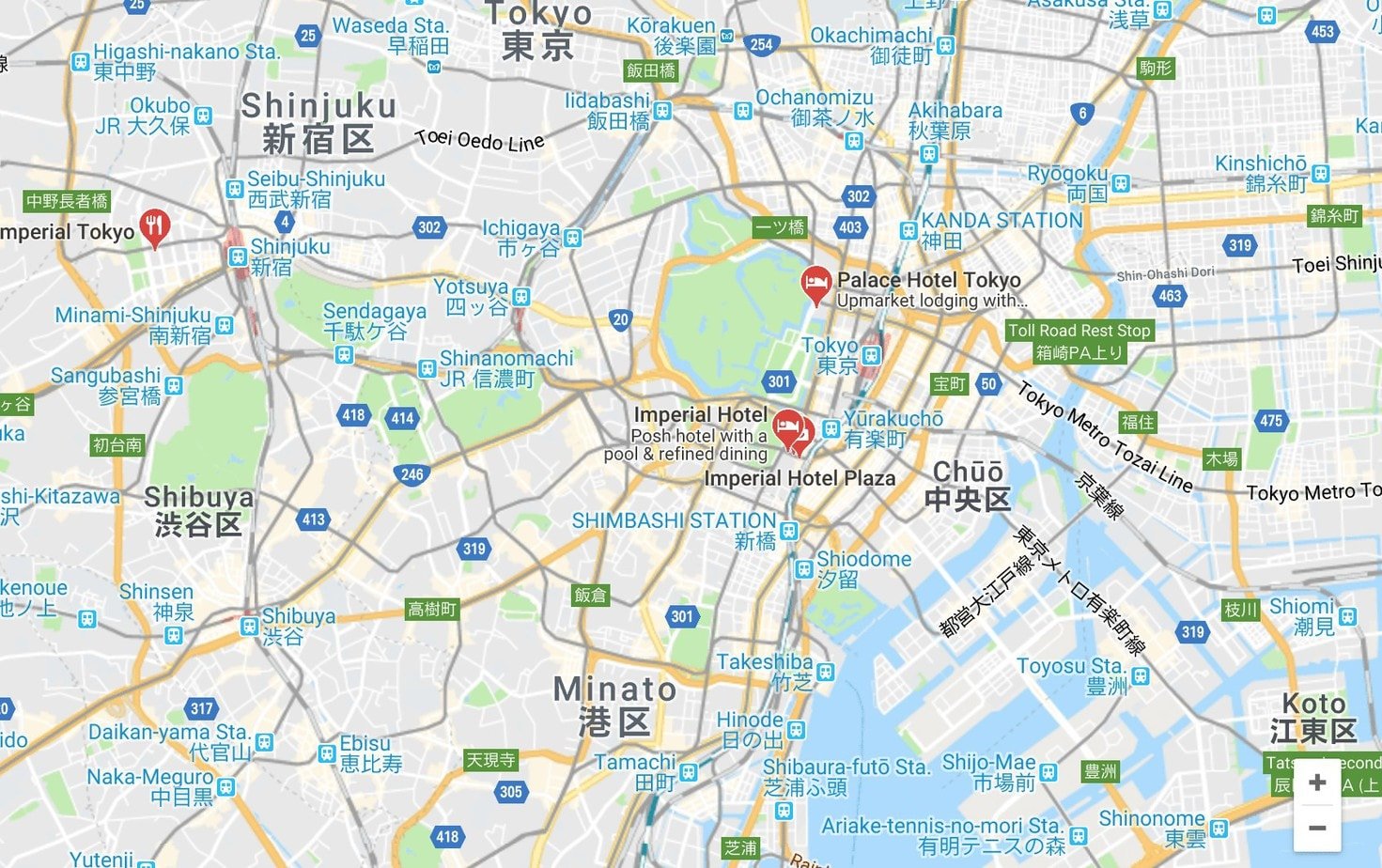The Imperial Palace Secluded Among The Japanese Black Pines
Imperial Palace of Tokyo Japan
The Imperial PalaceTokyoJapan A Palace of Asia – is stunning and majestic as you begin to get your first glances at this spectacular structure. This is the private residence of The Emperor and Empress of Japan, and private it is, as it discreetly peaks out from among the trees. The palace, in all its splendor, sits on the ancient grounds of the Edo Castle. These park-like grounds are a vast green space, with many native trees and bushes. Sprinkled among the native trees, are many spectacular cherry trees.
In the spring, these fluffy pink blooms almost remind you of pink cotton candy. You can only imagine the beauty of all these cherry trees in full bloom. It is like a fairy tale surrounding a picturesque palace. This inner garden is a perfect example of outrageous beauty!
Imperial Palace of Tokyo Japan Surroundings
The famous Edo Castle, with all its splendor, was the location of the Tokugawa Shogun Government. The Tokugawa Shogun Government ruled the area until 1603 when that time, it was overthrown. It was then that Tokyo became the capital. A new palace was constructed on the grounds of the Edo Castle and was finished in 1888. Unfortunately, this beautiful palace was destroyed during World War II. The original palace was rebuilt to be an exact replica of the one that was destroyed.
A Beautiful Moat Surrounds The Palace‘s Inner Garden
Imperial Palace Tokyo Japan
Palace of Asia
Security, of course, is always at a maximum level around any palace and this is no exception. However, not every modern palace still finds itself encircled by an amazing and awesome moat. The water in the moat is kept so clean, that you can see the reflection of the trees from both sides of this spectacular security feature. Talk about amazing security!
Meganebashi Or EyeGlass Bridge
The security is even tighter within The Imperial Palace of TokyoJapan inner circle, as the only way to enter the inner garden is by a beautiful stone bridge, working together, with a two-level wooden bridge (that was rebuilt along the way in steel) that is located behind the Meganebashi Bridge. This combination of bridges provides a safe and unique way to enter the inner palace grounds through one of the nine gates.
There are several individual brides crossing the mote, but all are controlled by the Meganebashi and the Nijubashi bridges. The double bridge is hard to see, and can best be viewed from the Kikyo Gaien or patio at the front of the Royal Palace. Only from the Kikyo Gaien, can visitors have a clear view of the Nijubashi or double bridge.
Each of the nine gates that enter the palace grounds has a special significance. Gate number one is the entrance to the Kokyo Gaien National Gardens, which is open to the public. Gate number two is especially interesting from a historical approach. It is the south gate leading to Edo Castle and finished in 1636. It was near this gate that the assistant samurai of the Shogun Government was assassinated.
This was also the beginning of the final collapse of the Shogun government. It is considered an important cultural property for the Japanese. Gate number three is the main Kokyo which is crossed over the stone bridge. It can only be used on the Emperor‘s birthday and for the New Year speech of the Emperor on January Second.
Gate number four is the main gate used by the tour guides to access the area of the newer palace. This is the central administration building of Kokyo which was completed in 1968, It is quite large with 7 wings, the Emperor‘s office, several ceremonial halls, banquet facilities, and other offices. During the tours, you can not enter the Palace, but you will enjoy a good look at the outside and the Palace grounds.
Gate number five is the main entrance to the main complex of the old Edo Castle, which was destroyed by fire in 1657. It is the official entrance to the East Garden and opens to the public. This area has several spectacular Japanese gardens, the ruins of the old Edo Castle, a museum, and many other buildings and areas of significance. This area is open to the public daily. The other gates are seldom used, except for special occasions.
In the above picture, you can also see the thick stone walls that yet provide another level of security for the palace. In addition to the massive stone walls, are several armed guards. The personal safety and security of the Emperor and the rest of the Royal Family is taken seriously in Japan.
Imperial Palace Tokyo Japan Kokyo Gaien National Gardens
The Kokyo Gaien National Gardens is most often called the Outer Garden. This is as close to the palace as most of the public can get, and provides yet another level of security. Notice how close to the downtown business center where the gardens are located. You can look one way beyond the trees and see the city and turn and see Japan in history. This enormous outer garden not only provides security, but rather a peaceful place to recharge your human batteries from the business of city life. During their lunch hours or after work, they can take a quiet stroll through the garden which brings them peace from the city rat race. What a gift nature gives!
The Japanese Pine Forming The Over-Story
In the midst of the Imperial Palace Of TokyoJapan, you find the Kokyo Gaien National Gardens, a beautiful green-space with spectacular living art. The air is crisp, and the scent of pine scents the air. The Japanese Black Pine forms the over-story to this urban forest. This species of pine has a natural resistance to pollution and salt, so it grows tall and strong throughout the Outer Garden.
Its resistance to pollution makes it the perfect urban tree, and it also has a resistance to salt, making it an excellent choice for a small island nation. These majestic trees just keep growing taller and stronger and eventually cover the native trees that form the under-story.
Living Art In An Urban Garden
These tall and sturdy Pines not only are capable of building a beautiful over-story in the forest or garden, but with patience, skill, and effort they can be made into beautiful living Bonsai trees. This artwork is a gift of nature and fills the outer-gardens with unique and intriguing works of living art. These are the living treasures you will see throughout the Kokyo Gaien National Gardens.
From when the trees were young, skilled masters in the art of Bonsai creation, have lovingly pruned and shaped these trees into the finished product you see today. This display of creativity is among the best living artists in the world. In the midst of such creativity, you are able to rejuvenate from your over-worked lifestyle to breathe in deeply the gift of fresh pine-scented air and restore peace and tranquility to your life.
If you have never spent any time at the Wadakura Fountain Park, in Kokyo Gaien National Gardens, this is a spectacular modern fountain, deep in the midst of an amazing garden. How can you not find peace and relaxation at the Wadakura Fountain Park?
What a gift Kokyo Gaien National Gardens is to the Japanese people. It was the original garden of the Royal Family, but after the Second World War, it was opened to the public.
A Modern City Blends With The Grounds Of An Ancient Castle
One of the things that Japan does well, blends the old and the new. They seem to understand that a whole person, considers the present and the past, thus they do not destroy them or hide them away out of sight. All of this beauty is located in the downtown area of Tokyo, Japan. You can stand in front of tall modern buildings and see the grounds surrounding an ancient past. Or stand in Kokyo National Park, and see a modern financial center in downtown Tokyo.
The Imperial Palace and the Kokyo Gaien National Gardens is only a short walk from the Tokyo Train Station, making it easy for visitors to access the grounds. There are clear signs everywhere, so getting lost should not be an option. Kokyo-Gaien National Gardens is only about a 10-20 minute walk from the Tokyo Train Station. It is about a ten-minute walk to the East Garden Entrance from the Tokyo Train station.
There are tours of the grounds most days except Friday and Monday. The tours are walking tours and you slowly enjoy the different sections of the Palace Grounds. There are also other tours that include the Imperial Palace within the whole city tours and river tours. Depending on your interest, there is a tour available.
One of the most important aspects of planning your trip is choosing the right accommodations. Whether you prefer a luxurious hotel or a budget-friendly hostel, it’s important to find a place to stay that meets your needs and preferences. It’s also a good idea to research the local transportation options, so you can get around easily and efficiently. Today, the Imperial Palace is a popular destination featured in many Japan guided tours.
There are several 4-star Hotels near Kokyo averaging between $100.00 to $200.00 dollars per night. If you are looking for 4.5 stars, they begin at around $300.00 dollars. It is easy to book your favorite hotel and many further away, provide transportation to the palace grounds.
Imperial Palace Tokyo Japan
Location Counts
Here is a list of hotels and restaurants for you to consider within this area. Using online maps you can narrow your area of focus. These locations can be used as map keywords that will help you plan a great time within the downtown Palace area.
Imperial Hotel
Palace Hotel Tokyo
帝国ホテル ベビールーム
Courtesy of Google maps
For additional information here is a video that will help you prepare and understand better what you will be seeing.

Imperial Palace Tokyo Japan
External links of interest
Imperial Household Agency | Imperial Palace in Tokyo
Image gallery of the Imperial Palace
Information on visiting the Imperial Palace on the Emperor’s birthday

If you would like to increase your research into The Imperial Palace Of TokyoJapan here are a few keywords to consider.
Imperial Palace Of Tokyo Japan
